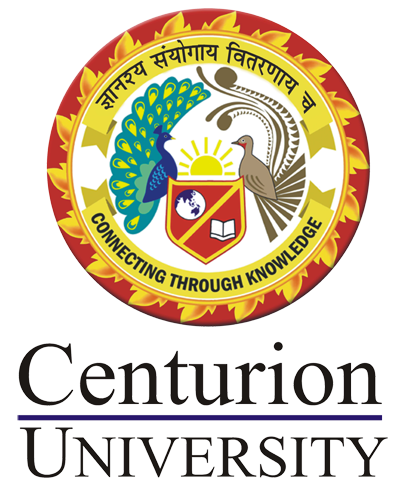I am text block. Click edit button to change this text. Lorem ipsum dolor sit amet, consectetur adipiscing elit. Ut elit tellus, luctus nec ullamcorper mattis, pulvinar dapibus leo.
Pharmacology related to anaesthesia
Course Attendees
Still no participant
Course Reviews
Still no reviews
| Subject Code | Name of the Subject | T-Pr-Pi | Credits |
| CUTM 1820 | PHARMACOLOGY RELATED TO ANESTHESIA | 3-0-1 | 4 |
Course Objectives
- To impart detailed knowledge of pharmacological agents used in anesthesia and perioperative care.
- To develop understanding of drug classifications, mechanisms of action, indications, contraindications, and adverse effects relevant to anesthesia practice.
- To integrate pharmacology principles with clinical decision-making for respiratory, cardiovascular, neurological, and perioperative management.
- To prepare learners for safe and effective use of emergency drugs, IV fluids, and drugs for metabolic and electrolyte disturbances in operative and critical care settings.
Course Outcomes
CO1: Understand pharmacotherapy principles for respiratory, cardiovascular, and neurological disorders relevant to anesthesia.
CO2: Demonstrate knowledge of general and local anesthetics, skeletal muscle relaxants, sedatives, hypnotics, and anticonvulsants.
CO3: Apply pharmacological knowledge to safe perioperative and ICU drug administration.
CO4: Appraise emergency drug usage, fluid therapy, and drug treatment of metabolic and infectious conditions in anesthesia settings.
Module I: RESPIRATORY SYSTEM
Pharmacotherapy of respiratory disorders:- Introduction, Modulators of bronchial smooth muscle tone and pulmonary vascular smooth muscle tone. Pharmacotherapy of bronchial asthma, Pharmacotherapy of cough
Drugs for cough, Mucolytic agents, Corticosteroids, – Classification, mechanism of action, routes of administration, indications, contra indications and adverse effects. Treatment for asthma
Module II: CARDIO VASCULAR SYSTEM
Cardiovascular drugs- Classification, mechanism of action, routes of administration, indications, contra indications, adverse effects and complications of –
- Antihypertensives
- Antiarrhythmic drugs
- Cardiac glycosides
- Drugs used in congestive cardiac failure
Module III: GENERAL ANAESTHETICS
Anaesthetic agents – Definition of general and local anaesthetics, types of anesthesia, stages of anesthesia
Classification of general anaesthetics, Pharmacokinetics and Pharmacodynamics of inhaled anaesthetic agents & Intravenous general anaesthetic agents
Local anaesthetics – Classification, mechanism of action, routes of administration, indications, contra indications and adverse effects
Module IV: SKELETAL MUSCLE RELAXANTS
Classification, mechanism of action, routes of administration, indications, contra indications and adverse effects
Module V: SEDATIVES AND HYPNOTICS
Sedatives, hypnotics - Classification, mechanism of action, routes of administration, indications, contra indications and adverse effects
Module VI: ANTI CONVULSANTS & ANTI EPILEPTICS
Anti-convulsant & Anti epileptics - Classification, mechanism of action, routes of administration, indications, contra indications and adverse effects
Module VII: MISCELLANEOUS DRUGS
Emergency drugs, IV fluids (Nacl, RL, DNS, hemacel, heparin) - various preparations and their usage, Drugs used in metabolic and electrolyte imbalance, Antitubercular drugs – Classification, mechanism of action, routes of administration, indications, contra indications and adverse effects
TEXTBOOKS
- Miller’s Anesthesia – Michael A. Gropper et al., 9th Edition, Elsevier
- Clinical Anesthesia – Paul G. Barash et al., 9th Edition, Wolters Kluwer
- Morgan & Mikhail’s Clinical Anesthesiology – G. Edward Morgan Jr. et al., 7th Edition, McGraw-Hill
- Textbook of Anaesthesia – Aitkenhead, Smith, Rowbotham, 7th Edition, Elsevier
- Basics of Anesthesia – Manuel Pardo, Ronald D. Miller, 8th Edition, Elsevier
- Pharmacology and Physiology for Anesthesia – Hugh C. Hemmings, Talmage D. Egan, 2nd Edition, Elsevier
Session 1: Introduction to pharmacotherapy of respiratory disorders
PPT Link:
Video Link:
Session 2: Modulators of bronchial smooth muscle tone
PPT Link:
Video Link:
Session 3: Modulators of pulmonary vascular smooth muscle tone
PPT Link:
Video Link:
Session 4: Pharmacotherapy of bronchial asthma
PPT Link:
Video Link:
Session 5: Pharmacotherapy of cough
PPT Link:
Video Link:
Session 6: Antitussives and Expectorants
PPT Link:
Video Link:
Session 7: Mucolytic agents
PPT Link:
Video Link:
Session 8: Checking anesthesia drugs and equipment before induction
PPT Link:
Video Link:
Session 9: Corticosteroids (classification and mechanism of action)
PPT Link:
Video Link:
Session 10: Corticosteroids (routes of administration and clinical uses)
PPT Link:
Video Link:
Session 11: Corticosteroids (contraindications and adverse effects)
PPT Link:
Video Link:
Session 12: Treatment strategies for asthma (stepwise approach)
PPT Link:
Video Link:
Session 13: Introduction to cardiovascular pharmacology
PPT Link:
Video Link:
Session 14: Antihypertensives
PPT Link:
Video Link:
Session 15: Antiarrhythmic drugs
PPT Link:
Video Link:
Session 16: Cardiac glycosides
PPT Link:
Video Link:
Session 17: Drugs for congestive cardiac failure
PPT Link:
Video Link:
Session 18: Definition of general and local anesthetics
PPT Link:
Video Link:
Session 19: Types and stages of anesthesia and Classification of general anesthetic agents
PPT Link:
Video Link:
Session 20: Pharmacokinetics and Pharmacodynamics of inhaled anesthetics
PPT Link:
Video Link:
Session 21: Local anesthetics
PPT Link:
Video Link:
Session 22: Local anesthetics (adverse effects and toxicity management)
PPT Link:
Video Link:
Session 23: Skeletal muscle relaxants
PPT Link:
Video Link:
Session 24: Skeletal muscle relaxants (routes, indications, and adverse effects)
PPT Link:
Video Link:
Session 25: Sedatives and hypnotics
PPT Link:
Video Link:
Session 26: Sedatives and hypnotics (routes, indications, and adverse effects)
PPT Link:
Video Link:
Session 27: Anticonvulsants and antiepileptics
PPT Link:
Video Link:
Session 28: Emergency drugs in anesthesia practice
PPT Link:
Video Link:
Session 29: IV fluids – NaCl, RL, DNS, hemacel, heparin (composition and uses)
PPT Link:
Video Link:
Session 30: Antitubercular drugs
PPT Link:
Video Link:
Session 31: Antitubercular drugs (adverse effects and precautions)
PPT Link:
Video Link:
Our Main Teachers
Teacher in Anesthesia Department

